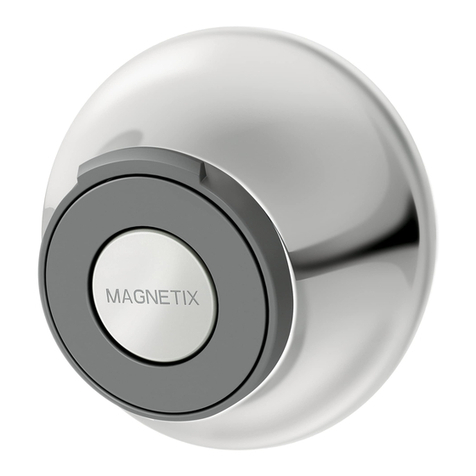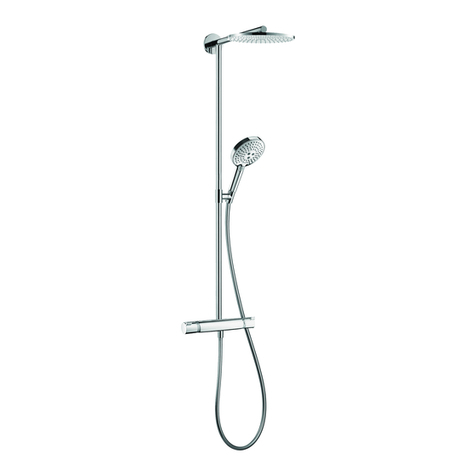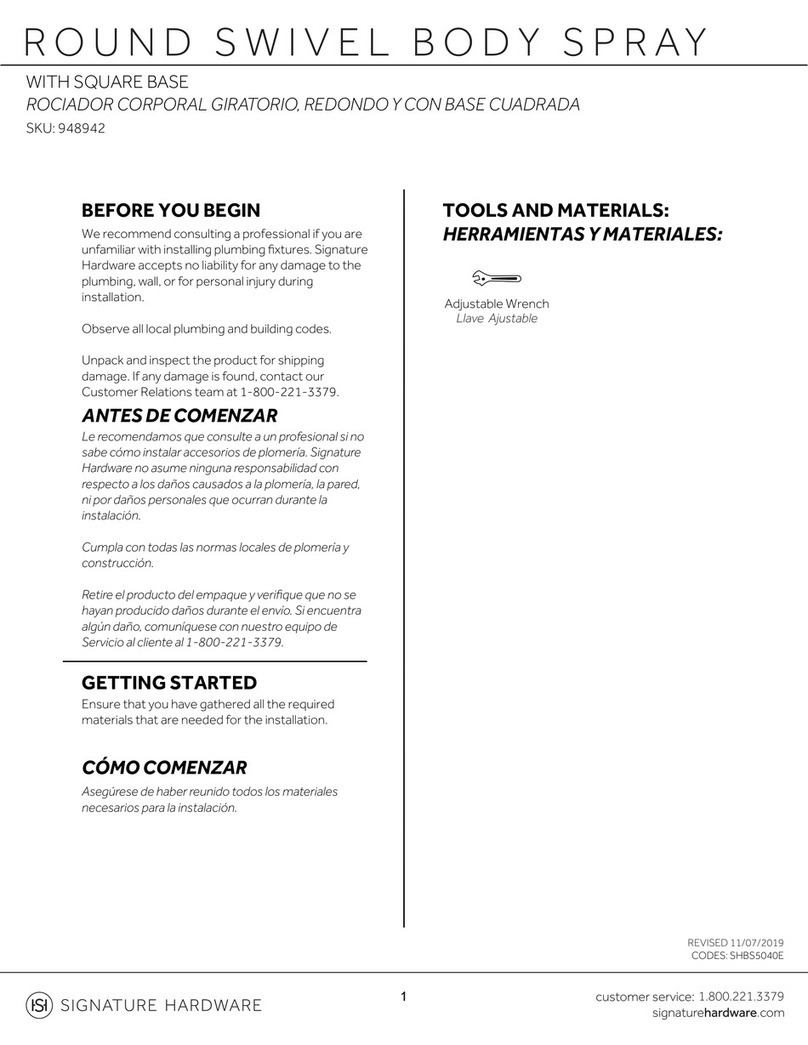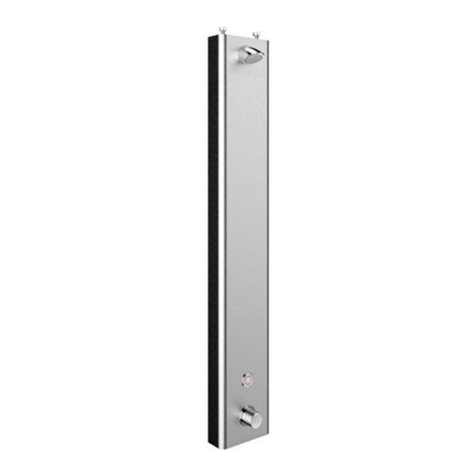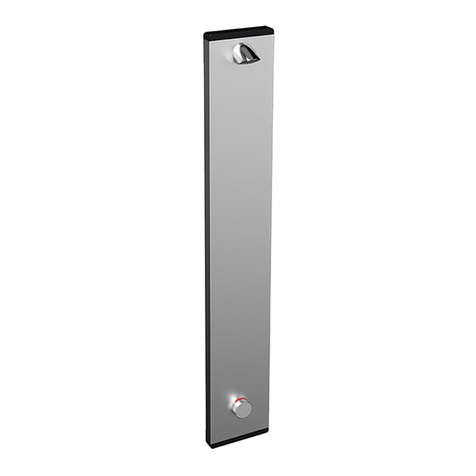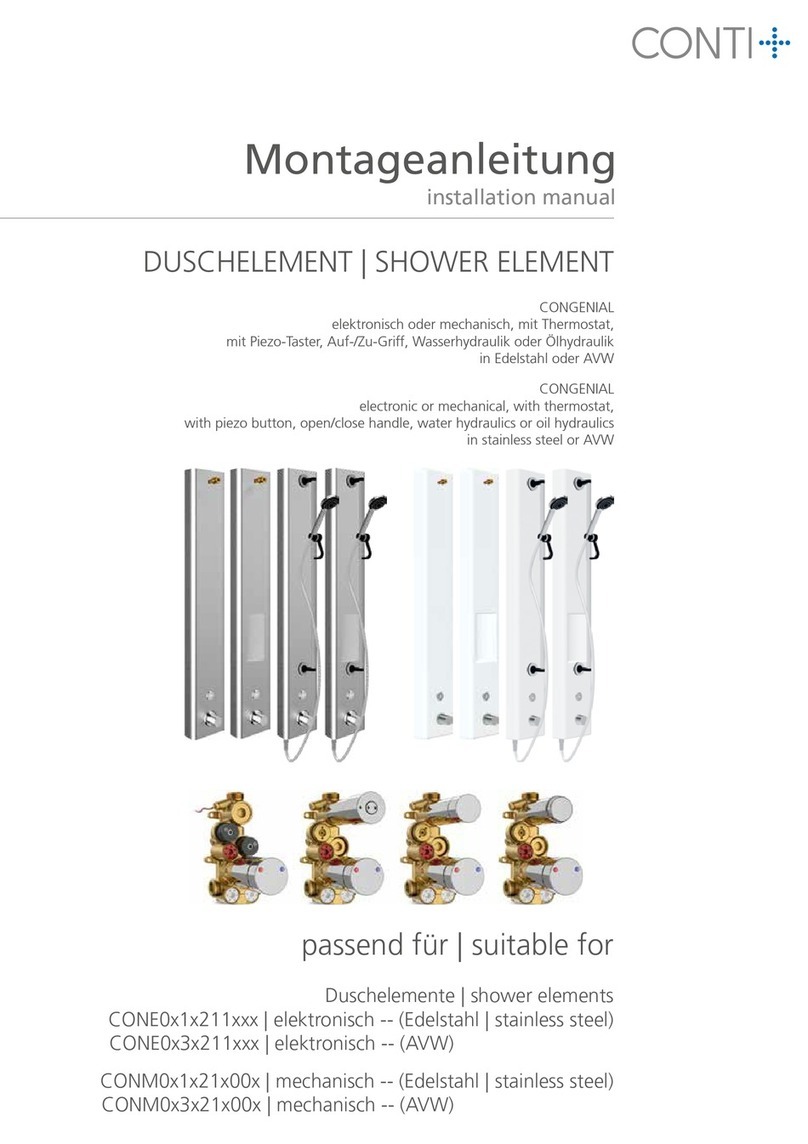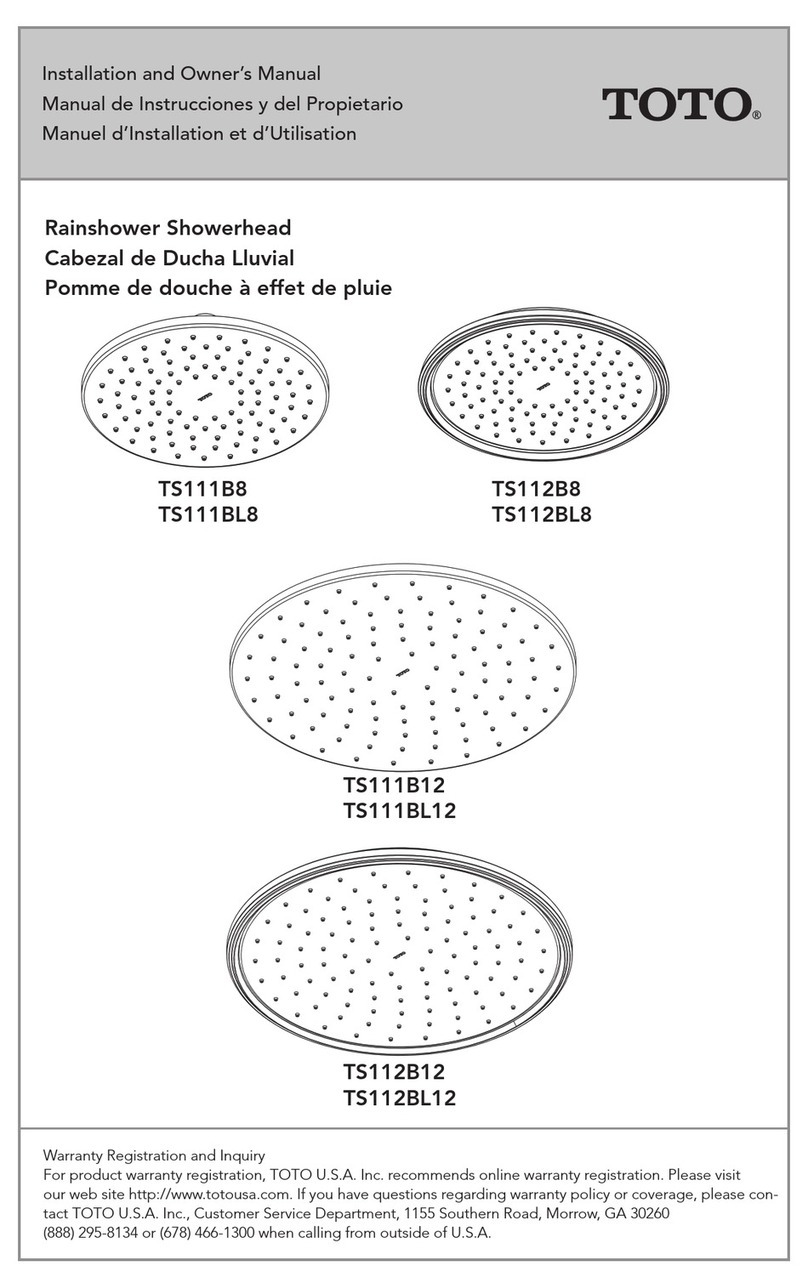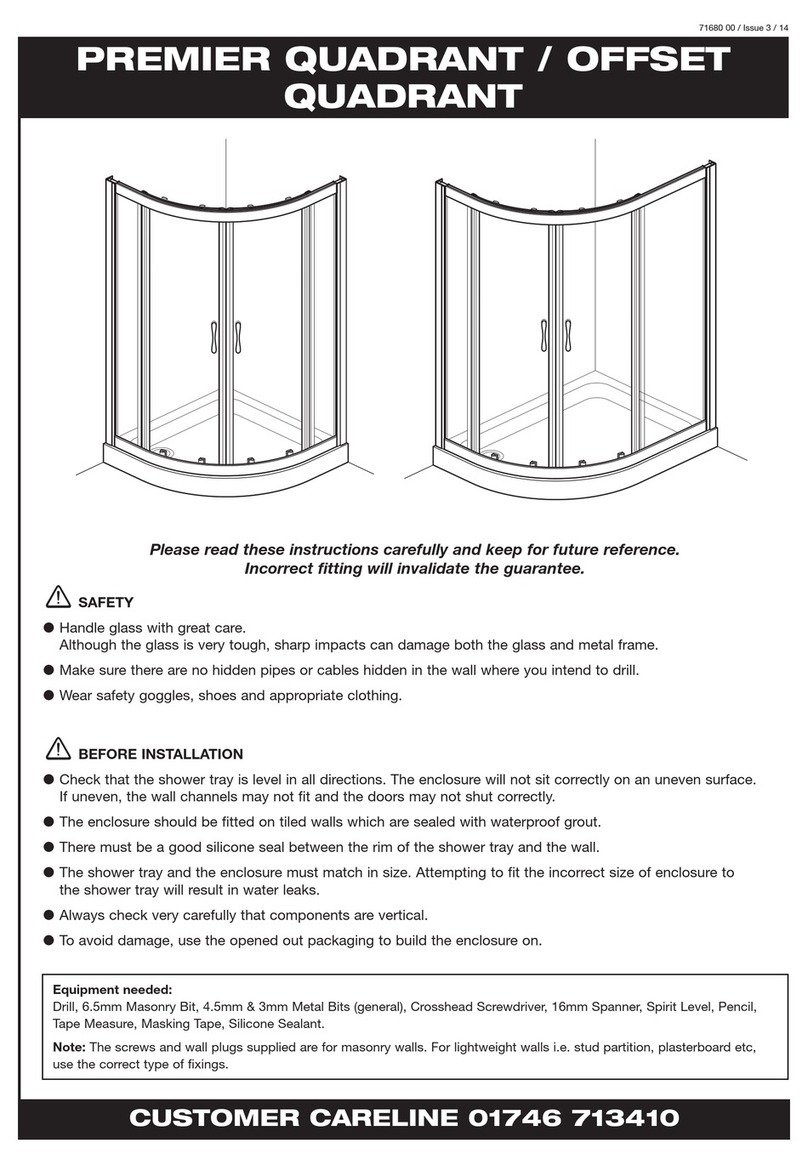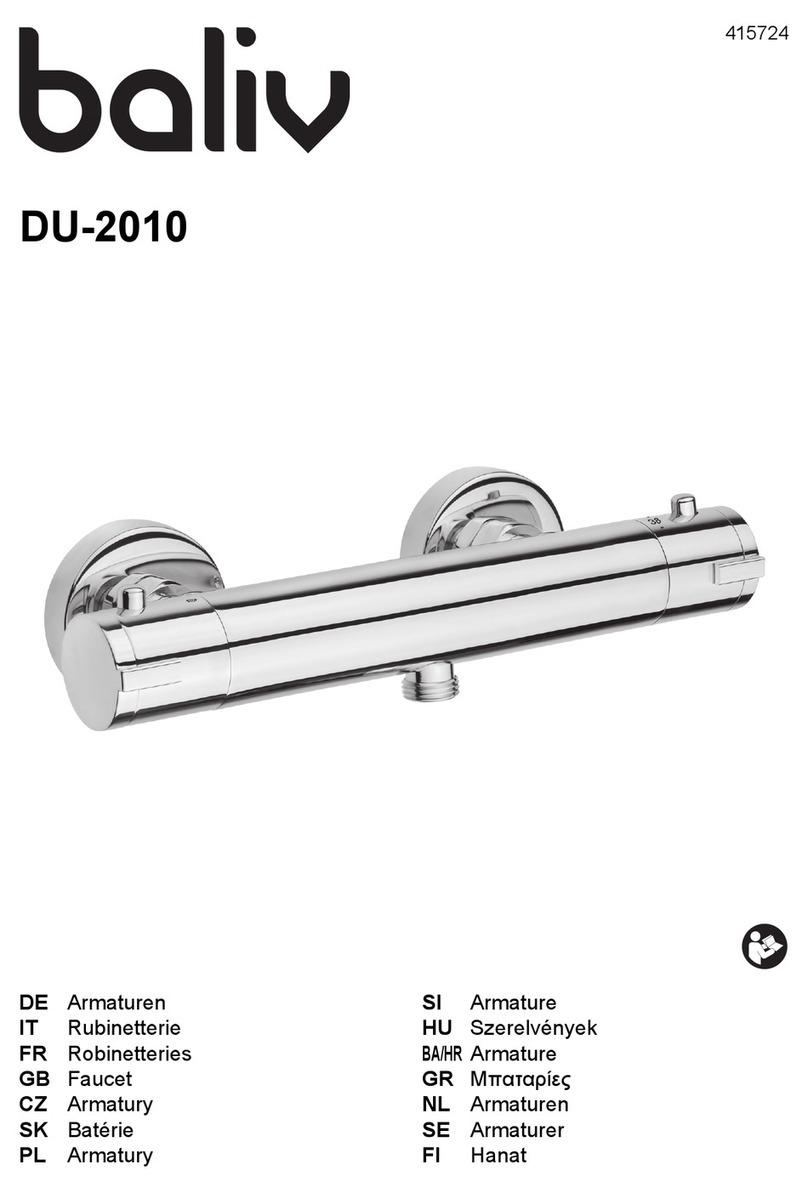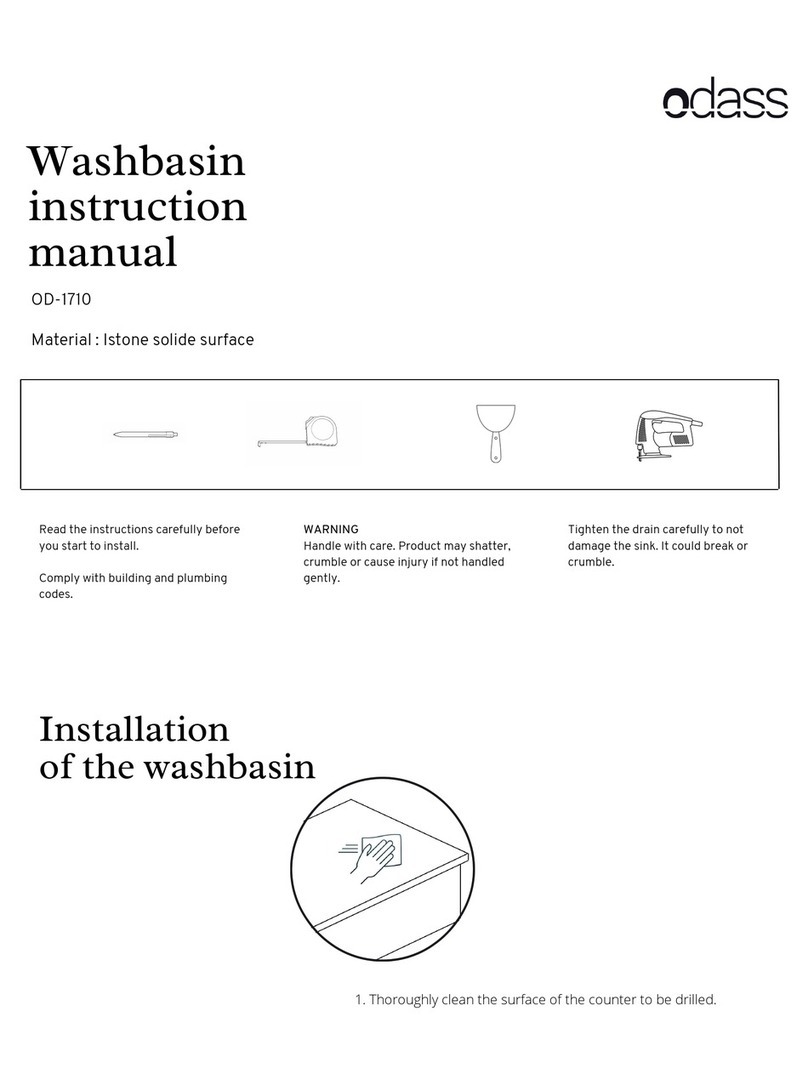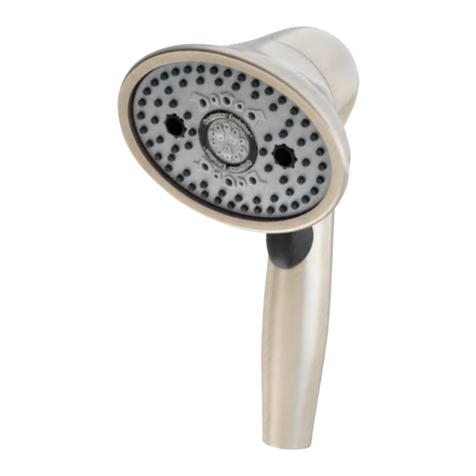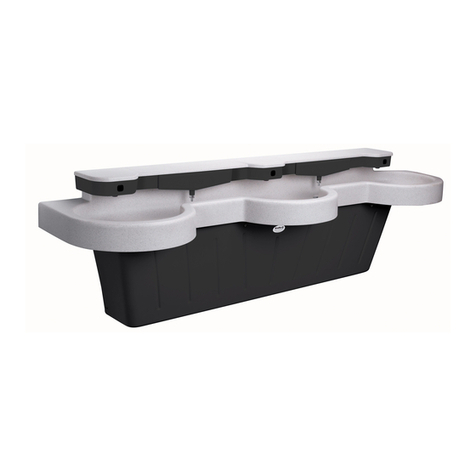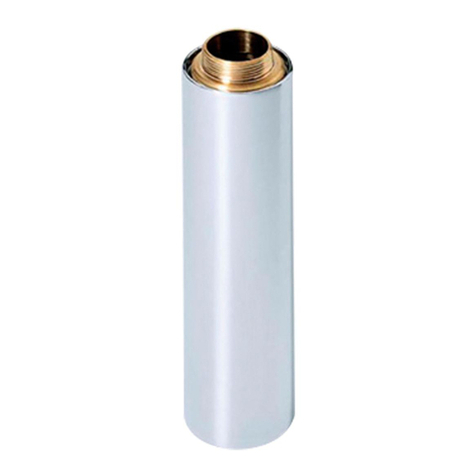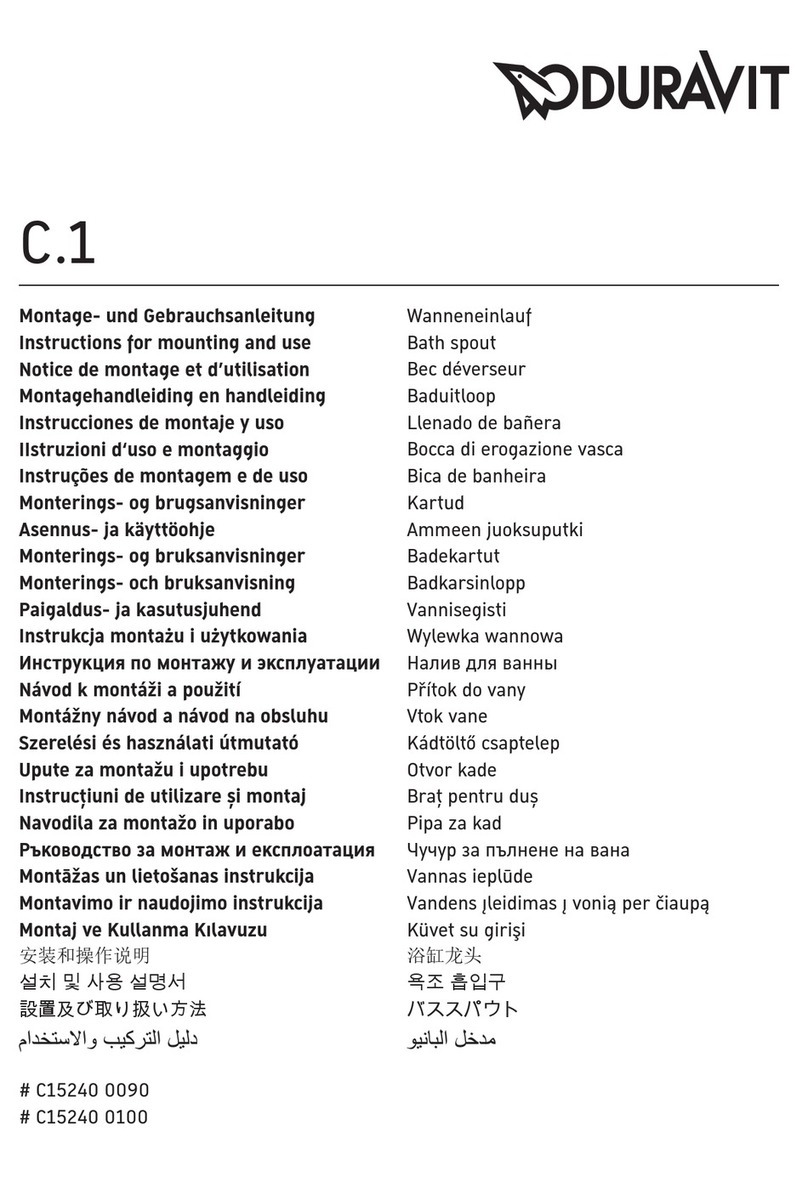
4
CONTI
Sanitärarmaturen
GmbH
|
Hauptstraße
98
|
35435
Wettenberg
|
Deutschland
|
T
el.
+49
641
98221
0
|
Fax:
+49
641
98221
50
|
[email protected]www.conti.plus | Druckfehler und Irrtümer sowie technische und maßliche Änderungen vorbehalten. | Errors and technical changes remain reserved.
CONTI Sanitärarmaturen GmbH | Hauptstraße 98 | 35435 Wettenberg | Deutschland | Tel� +49 641 98221 0 | Fax: +49 641 98221 50 | info@conti�plus
www�conti�plus | Druckfehler und Irrtümer sowie technische und maßliche Änderungen vorbehalten� | Errors and technical changes remain reserved�
1
Wichtige Informationen
Lesen Sie die beigelegten Sicherheitshinweise
unbedingt vor Installation und Inbetriebnahme
des Systems / Produkts.
Fehlinstallationen können Funktionsstörungen
und Schäden verursachen sowie zur Gefahr
für Benutzer und Fachhandwerker werden.
Für unsachgemäße Bedienung und nicht be-
stimmungsgemäße Verwendung übernimmt
der Hersteller keine Gewährleistung.
Elektrische Verdrahtungen und Installationen sind
von einer Elektrofachkraft gemäß DIN VDE 105-100
durchzuführen�
Leitungen nur an vorgegebenen Positionen
einführen� Gewährleistungsübernahme nur bei
Verwendung der vorgeschriebenen Leitungstypen�
Bei Montage von zentralen Steuereinheiten DIN
VDE 100-701 beachten�
• Münzautomaten in einem spritzwasser-
geschützten Vorraum einbauen
• Steuerschränke in trockenem Raum montieren
Bei Wassertemperaturen von über 45°C besteht
Verbrühungsgefahr!
Das Arbeitsblatt DVGW W551 ist zu beachten!
Zur Vermeidung von Beschädigungen an Funktions-
bauteilen, Funktionsstörungen sowie Wasserschä-
den Betriebsdrücke gemäß vorgegebener techni-
scher Daten einhalten�
Wasserzufuhr vor Montage und Demontage
wasserführender Bauteile und Armaturenkompo-
nenten unterbrechen�
Vor und nach Montage Leitungen gemäß DIN EN
806-4 bzw ZVSHK-Merkblatt „Spülen, Desinfizieren
und Inbetriebnahme von Trinkwasserinstallationen“
spülen�
Produkt in frostfreier, trockener Umgebung lagern�
Befestigungsmaterial im Lieferumfang auf Verwend-
barkeit für aktuelle Wandbeschaffenheit prüfen�
Nur Befestigungsschrauben aus nichtrostendem
Stahl einsetzen�
Wartungs- und Instandhaltungsverpflichtung gemäß
VDI/DVGW 6023 bzw� DIN EN 806-5 beachten�
Bei vorübergehender Stilllegung von Armaturen
oder anderen wasserführenden Bauteilen DIN
1988-200 bzw� VDI/DVGW 6023 beachten�
Kleinteile wie zum Beispiel Schrauben, Dichtungen
oder andere aus Metall oder Kunststoff bestehen-
de Teile nicht in den Körper einführen oder ver-
schlucken! Dies kann zu gesundheitlichen Schäden
bis zu lebensbedrohenden Situationen führen!
Vor der Reinigung von Bauteilen unbedingt die An-
wendungshinweise des Reinigungsmittels lesen!
Vor der Anwendung des Reinigers Rücksprache mit
einer qualifizierten Fachkraft halten�
Wasserführende Abschnitte von Bauteilen sind
stets nur mit Wasser zu betreiben! Öle oder ande-
re Flüssigkeiten sind für den Betrieb nicht geeignet
und können zu Beschädigungen und Funktions-
ausfall des Bauteils führen�
Die Verwendung CONTI+fremder Ersatzteile kann
zu Beschädigungen des Bauteils führen und bedingt
ein unmittelbares Erlöschen der Gewährleistung�
Batterien nicht in den Hausmüll
geben� Verpflichtung zur Rückgabe
an kommunale Sammelstellen oder
Handel�
CONTI Sanitärarmaturen GmbH | Hauptstraße 98 | 35435 Wettenberg | Deutschland | Tel� +49 641 98221 0 | Fax: +49 641 98221 50 | info@conti�plus
www�conti�plus | Druckfehler und Irrtümer sowie technische und maßliche Änderungen vorbehalten� | Errors and technical changes remain reserved�
3
Reinigungshinweise
Oberflächen
Die am häufigsten vorkommende Vergütungs-
schicht einer Sanitärarmatur ist die Chrom-Nickel-
Oberfläche entsprechend den Anforderungen nach
DIN EN 248� Darüber hinaus werden als Oberflä-
chenmaterialien Edelstahl, Kunststoffe einschließ-
lich Pulver- und Nasslacken, eloxiertes Aluminium
und galvanische Oberflächen verwendet�
Farbige, nichtmetallische Oberflächen sind grund-
sätzlich empfindlicher als metallische, insbesondere
gegen Verkratzen� Vor Beginn der Reinigung ist es
daher unbedingt erforderlich, die Art der zu reini-
genden Oberfläche genau zu bestimmen�
Allgemeine Hinweise zur Reinigung und Pflege
von Sanitärarmaturen und Accessoires
Um den Marktbedürfnissen hinsichtlich Design
und Funktionalität gerecht zu werden, bestehen
moderne Sanitärprodukte heute aus sehr unter-
schiedlichen Werkstoffen und stellen somit verschie-
dene Anforderungen an die zur Anwendung kom-
menden Reinigungsmittel und deren Inhaltsstoffe�
Reinigungsmittel und -hilfsmittel
Säuren sind als Bestandteil von Reinigern zur Entfer-
nung von Kalkablagerungen unverzichtbar�
Bei Sanitärprodukten ist jedoch grundsätzlich zu be-
achten, dass
• nur die für den Anwendungsbereich bestimmten
Reinigungsmittel eingesetzt werden,
• keine Reiniger verwendet werden, die Salzsäure,
Ameisensäure oder Essigsäure enthalten, da diese
schon bei einmaliger Anwendung zu erheblichen
Schäden führen können,
• phosphorsäurehaltige Reiniger nicht uneinge-
schränkt anwendbar sind,
• keine chlorbleichlaugehaltigen Reiniger angewen-
det werden,
• das Mischen von Reinigungsmitteln generell nicht
zulässig ist,
• die Verwendung abrasiv wirkender Reinigungs-
mittel und Geräte, wie untaugliche Scheuermittel,
und Padschwämme, zu Schäden führen kann,
• vorzugsweise Reinigungstextilien verwendet wer-
den, die möglichst wenig Partikel binden können
(gewirkte Tücher sind eher geeignet als gewebte)�
Hinweis
Auch Rückstände von Körperpflegemitteln können
Schäden verursachen und müssen unmittelbar
nach Benutzung der Armaturen und Accessoires
mit klarem, kaltem Wasser rückstandsfrei abge-
spült werden� Bei bereits beschädigten Oberflächen
kommt es durch Einwirken der Reinigungsmittel
zum Fortschreiten der Schäden�
Empfehlung zur Reinigung und Pflege
Die Gebrauchsanweisungen der Reinigungsmittel-
hersteller sind unbedingt zu befolgen�
Generell ist zu beachten, dass
• die Reinigung bedarfsgerecht durchzuführen ist,
• Reinigungsdosierung und Einwirkdauer den
objektspezifischen Erfordernissen anzupassen
sind und das Reinigungsmittel nie länger als nötig
einwirken darf,
• dem Aufbau von Verkalkungen durch regelmäßi-
ges Reinigen vorzubeugen ist; daher sollten nach
dem Gebrauch Wassertropfen mit einem wei-
chen Tuch oder Fensterleder abgewischt werden,
• vorhandene Kalkablagerungen ggf� durch direk-
ten Reinigungsmittelauftrag zu entfernen sind,
• bei der Sprühreinigung die Reinigungslösung
keinesfalls auf die Sanitärarmaturen und Acces-
soires, sondern auf das Reinigungstextil (Tuch/
Schwamm) aufzusprühen und damit die Reini-
gung durchzuführen ist, da die Sprühnebel in
Öffnungen und Spalten usw� der Armatur und
Accessoires eindringen und Schäden verursachen
können,
• Reinigungstextilien möglichst oft und gründlich
ausgewaschen werden, sodass nur saubere Rei-
nigungstextilien ohne Fremdpartikel verwendet
werden; in Reinigungstextilien eingelagerte Parti-
kel können zu Verkratzungen und Schädigungen
von Oberflächen führen,
• nach der Reinigung ausreichend mit klarem
Wasser nachgespült werden muss, um verblie-
bene Produktanhaftungen restlos zu entfernen�
Oberflächenschutz
Lackierte und galvanisierte Oberflächen sollten
regelmäßig mit einem dünnen Schutzfilm versehen
werden� Hierzu empfiehlt sich die Verwendung
eines auf lackierte bzw� galvanisierte Oberflächen
speziell abgestimmten Konservierungsmittels�
Wichtige Informationen
DE

